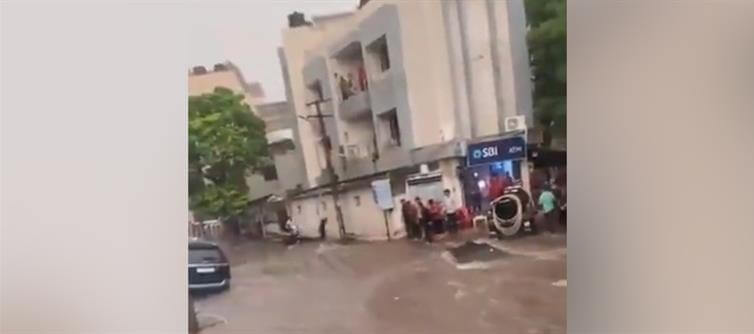
The tweet from indian Gems, posted on june 30, 2025, at 16:59, features a video capturing the severe flooding in rajkot, Gujarat, following heavy rainfall. The video, which lasts 76.97 seconds, shows a street transformed into a river, with water levels high enough to submerge vehicles and disrupt daily life. The accompanying text reads, "₹3,118 Crores spent on making rajkot a smart City, which turned into a river after rain. Obviously, for no reason, Contractors and babus end up putting gold switches in their homes."
The tweet's caption criticizes the effectiveness of the ₹3,118 crore investment in Rajkot's development as a "Smart City" under the indian government's initiative. The term "Smart City" refers to urban areas that leverage technology and modern infrastructure to improve living standards, sustainability, and efficiency. However, the video suggests that despite this substantial investment, the city remains vulnerable to flooding, a recurring issue during the monsoon season. The author implies that the funds may have been misallocated or mismanaged, leading to inadequate infrastructure to handle heavy rainfall.
 The sarcastic remark about contractors and government officials ("babus") using the money to "put gold switches in their homes" highlights allegations of corruption and misuse of public funds. This is a common critique in India, where large-scale infrastructure projects often face scrutiny for transparency and accountability issues, as noted in related web content about corruption in the country.
The sarcastic remark about contractors and government officials ("babus") using the money to "put gold switches in their homes" highlights allegations of corruption and misuse of public funds. This is a common critique in India, where large-scale infrastructure projects often face scrutiny for transparency and accountability issues, as noted in related web content about corruption in the country.
This tweet taps into a larger discourse on urban development, governance, and corruption in India. rajkot, like many other cities, has been part of the Smart Cities Mission, aimed at transforming urban landscapes through innovative solutions. However, the video suggests that fundamental challenges, such as drainage and flood management, have not been adequately addressed. This raises questions about the priorities and execution of these development projects, especially in regions prone to natural disasters.
Rajkot's susceptibility to flooding is well-documented, as mentioned in the web results from the Times of India, where the city has faced flood-like situations due to heavy rainfall, particularly affecting low-lying areas. Despite efforts to improve infrastructure, the recurring nature of these floods indicates systemic challenges. The tweet's author seems to argue that these challenges persist due to mismanagement and corruption, rather than a lack of resources or awareness.
The tweet's caption criticizes the effectiveness of the ₹3,118 crore investment in Rajkot's development as a "Smart City" under the indian government's initiative. The term "Smart City" refers to urban areas that leverage technology and modern infrastructure to improve living standards, sustainability, and efficiency. However, the video suggests that despite this substantial investment, the city remains vulnerable to flooding, a recurring issue during the monsoon season. The author implies that the funds may have been misallocated or mismanaged, leading to inadequate infrastructure to handle heavy rainfall.
 The sarcastic remark about contractors and government officials ("babus") using the money to "put gold switches in their homes" highlights allegations of corruption and misuse of public funds. This is a common critique in India, where large-scale infrastructure projects often face scrutiny for transparency and accountability issues, as noted in related web content about corruption in the country.
The sarcastic remark about contractors and government officials ("babus") using the money to "put gold switches in their homes" highlights allegations of corruption and misuse of public funds. This is a common critique in India, where large-scale infrastructure projects often face scrutiny for transparency and accountability issues, as noted in related web content about corruption in the country.This tweet taps into a larger discourse on urban development, governance, and corruption in India. rajkot, like many other cities, has been part of the Smart Cities Mission, aimed at transforming urban landscapes through innovative solutions. However, the video suggests that fundamental challenges, such as drainage and flood management, have not been adequately addressed. This raises questions about the priorities and execution of these development projects, especially in regions prone to natural disasters.
Rajkot's susceptibility to flooding is well-documented, as mentioned in the web results from the Times of India, where the city has faced flood-like situations due to heavy rainfall, particularly affecting low-lying areas. Despite efforts to improve infrastructure, the recurring nature of these floods indicates systemic challenges. The tweet's author seems to argue that these challenges persist due to mismanagement and corruption, rather than a lack of resources or awareness.




 click and follow Indiaherald WhatsApp channel
click and follow Indiaherald WhatsApp channel